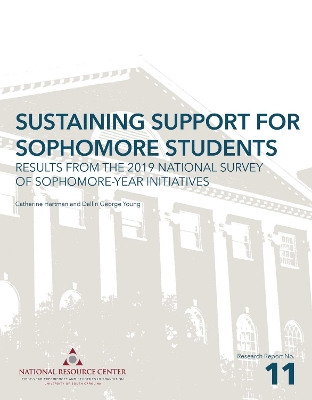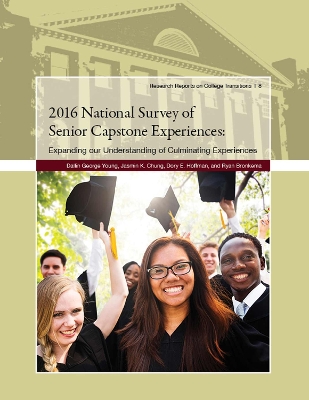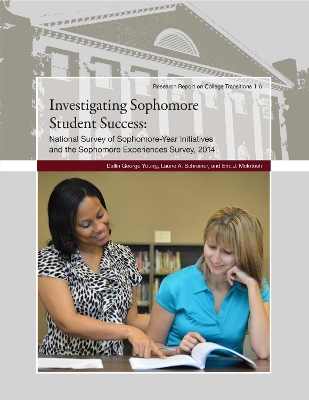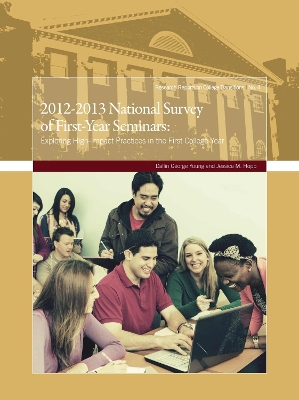Research Reports on College Transitions
1 primary work • 4 total works
Book 11
Sustaining Support for Sophomore Students
by Catherine Hartman and Dallin George Young
Published 24 November 2021
2016 National Survey of Senior Capstone Experiences
by Dallin George Young, Jasmin K. Chung, Dory E. Hoffman, and Ryan Bronkema
Published 15 December 2017
Senior capstone experiences, one of a number of high-impact educational practices promoted by the Association of American Colleges and Universities, provide students with an opportunity to integrate and apply what they have learned throughout their undergraduate years. Participating in capstone experiences have been linked to engagement in deep learning and gains in personal and social development, practical competence, and general education. The 2016 National Survey of Senior Capstone Experiences is an institution-level study designed to gather a national profile of campus efforts to promote student success in the senior year. This research report presents findings related to institutional priorities for the senior year, the types of capstone experiences offered, and the organization and administration of select capstone experiences.
Investigating Sophomore Student Success
by Dallin George Young, Laurie A. Schreiner, and Eric J. McIntosh
Published 17 November 2015
Less is known about the second college year compared to other transition points, and fewer high-impact initiatives and curricular programs tend to be offered to sophomores. To increase our knowledge of this important, but sometimes neglected, year on the collegiate journey, the National Survey of Sophomore-Year Initiatives and the Sophomore Experiences Survey. Researchers explored sophomore student characteristics, institutional efforts to support sophomores, and student perceptions of their learning and development. Divided into three sections, the report offers an overview of each survey instrument and an integrated discussion of findings and their implications for practice and ongoing research. The research report provides useful tools for institutions looking for benchmarks to create new sophomore-year programs or restructure existing initiatives.
2012-2013 National Survey of First-Year Seminars
by Dallin George Young and Jessica M. Hopp
Published 17 March 2014
For a quarter century, the National Resource Center has been examining the prevalence, structure, and administration of first-year seminars on American college campuses. The 2012-2013 administration of the National Survey of First-Year Seminars was expanded to explore the connection between the seminar and other high-impact practices in the first college year, including learning communities, service-learning, common reading programs, undergraduate research, and writing instruction. Findings are disaggregated by institutional characteristics and seminar type so that readers may easily identify the course features with the greatest relevance for their own context.



